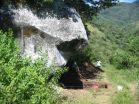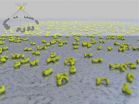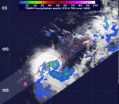(Press-News.org) In the face of hard times, which strategy gives us the best shot at survival: saving for the future or spending resources on immediate gains? The answer may depend on the economic conditions we faced in childhood, according to new research published in Psychological Science, a journal of the Association for Psychological Science.
Drawing on life history theory, Vladas Griskevicius of the University of Minnesota's Carlson School of Management and colleagues hypothesized that the strategy a person takes when times are tight may be determined, at least in part, by features of their childhood environment.
The researchers hypothesized that people who grew up unpredictable, harsh conditions (e.g., poverty), would take a "fast" strategy, focusing on immediate gains and ignoring long-term consequences. People who grew up in more predictable, comfortable conditions, however, would take a "slow" strategy, delaying immediate gratification in an effort to increase future payoffs.
In two experiments, the researchers primed half of the participants to think about economic recession. All of the participants then completed tasks related to risk-taking and impulsive decision-making.
Participants who grew up in poorer homes responded to recession cues with riskier, more impulsive responses than participants in the control group, consistent with a "fast" strategy. They were also faster to approach luxury good temptations. Participants who grew up in wealthier homes, on the other hand, responded to recession cues by showing less risky, less impulsive responses than participants in the control group, consistent with a "slow" strategy. They were also slower to approach the luxury goods.
In a third experiment, Griskevicius and colleagues found evidence that these different life history strategies may manifest as oxidative stress as detected in urine, a physiological indicator of cellular damage that can be accelerated by environmental stressors (such as those associated with poverty).
"These experiments show that our early childhood environment can program our life history strategy for the rest of our lives," says Griskevicius. "During good times, the tendencies associated with fast versus slow strategies can be dormant, but they emerge under duress."
Importantly, these tendencies can influence our responses in automatic and non-deliberative ways — showing up even at the physiological level.
The trade-offs we make in times of scarcity have important consequences, but the researchers emphasize that neither strategy is inherently good or bad.
"Lots of research assumes that delay of gratification is always a good thing, but the current research suggests that it's sometimes smart to be impulsive," Griskevicius explains. "For people who expect to live in a harsh and unpredictable environment, it's more adaptive to be impulsive and maximize present resources and opportunities."
###
For more information about this study, please contact: Vladas Griskevicius at vladasg@umn.edu.
The APS journal Psychological Science is the highest ranked empirical journal in psychology. For a copy of the article "When the Economy Falters, Do People Spend or Save? Responses to Resource Scarcity Depend on Childhood Environments" and access to other Psychological Science research findings, please contact Anna Mikulak at 202-293-9300 or amikulak@psychologicalscience.org.
If we go over the fiscal cliff, will people spend or save? Childhood environments may hold the key
2013-01-15
ELSE PRESS RELEASES FROM THIS DATE:
4,000-year-old shaman's stones discovered near Boquete, Panama
2013-01-15
Archaeologists working at the Smithsonian Tropical Research Institute in Panama have discovered a cluster of 12 unusual stones in the back of a small, prehistoric rock-shelter near the town of Boquete. The cache represents the earliest material evidence of shamanistic practice in lower Central America.
Ruth Dickau, Leverhulme Post-doctoral Fellow at the University of Exeter in England, unearthed the cache of stones in the Casita de Piedra rock-shelter in 2007. A piece of charcoal found directly underneath the cache was radiocarbon dated to 4,800 years ago. A second fragment ...
NIH scientists identify protective role for antibodies in Ebola vaccine study
2013-01-15
WHAT: Researchers at the National Institutes of Health (NIH) and Oregon Health & Science University (OHSU) have found that an experimental vaccine elicits antibodies that can protect nonhuman primates from Ebola virus infection. Ebola virus causes severe hemorrhagic fever in humans and nonhuman primates, meaning that infection may lead to shock, bleeding and multi-organ failure. According to the World Health Organization, Ebola hemorrhagic fever has a fatality rate of up to 90 percent. There is no licensed treatment or vaccine for Ebola virus infection.
Several research ...
Rice researchers see surprising twist to protein misfolding
2013-01-15
An effort to develop software that unravels the complexities of how proteins fold is paying dividends in new findings on how they misfold, according to researchers at Rice University.
The study published this week in the Proceedings of the National Academy of Sciences by chemist Peter Wolynes and his team at Rice's BioScience Research Collaborative should be of particular interest to those who probe the roots of degenerative diseases associated with the aggregation of amyloid fibers in the body. These include Alzheimer's and Parkinson's diseases and Type 2 diabetes.
The ...
Diet may not impact certain health outcomes in older persons
2013-01-15
UNIVERSITY PARK, Pa. -- Eating diets high in sugar and fat may not affect the health outcomes of older adults ages 75 and up, suggesting that placing people of such advanced age on overly restrictive diets to treat their excess weight or other conditions may have little benefit, according to researchers at Penn State and Geisinger Healthcare System.
"Historically people thought of older persons as tiny and frail," said Gordon Jensen, head of the Department of Nutritional Sciences at Penn State, "but that paradigm has changed for many older persons. Currently, 30 percent ...
Will changes in climate wipe out mammals in Arctic and sub-Arctic areas?
2013-01-15
The climate changes depicted by climatologists up to the year 2080 will benefit most mammals that live in northern Europe's Arctic and sub-Arctic land areas today if they are able to reach their new climatic ranges. This is the conclusion drawn by ecologists at Umeå University in a recently published article in the journal Plos ONE.
The scientists Anouschka Hof, Roland Jansson, and Christer Nilsson of the Department of Ecology and Environmental Science at Umeå University investigated how future climate changes may come to impact mammals in northern Europe's Arctic and ...
Generic HIV treatment strategy could save nearly $1 billion annually but may be less effective
2013-01-15
NEW YORK (Jan. 14, 2013) -- Replacing the combination of brand-name, antiretroviral drugs currently recommended for control of HIV infection with soon-to-be-available generic medications could save the U.S. health care system almost $1 billion a year but may diminish the effectiveness of HIV treatment. A study led by Massachusetts General Hospital (MGH) and Weill Cornell Medical College investigators, appearing in the January 15 Annals of Internal Medicine, examines the potential impact of such a change.
"The switch from branded to generic antiretrovirals would place ...
Scientists discover structure of protein essential for quality control, nerve function
2013-01-15
LA JOLLA, CA – January 14, 2013 – Using an innovative approach, scientists at The Scripps Research Institute (TSRI) have determined the structure of Ltn1, a recently discovered "quality-control" protein that is found in the cells of all plants, fungi and animals.
Ltn1 appears to be essential for keeping cells' protein-making machinery working smoothly. It may also be relevant to human neurodegenerative diseases, for an Ltn1 mutation in mice leads to a motor-neuron disease resembling amyotrophic lateral sclerosis (ALS, also known as Lou Gehrig's disease).
"To better ...
CU-led study shows pine beetle outbreak buffers watersheds from nitrate pollution
2013-01-15
A research team involving several scientists from the University of Colorado Boulder has found an unexpected silver lining in the devastating pine beetle outbreaks ravaging the West: Such events do not harm water quality in adjacent streams as scientists had previously believed.
According to CU-Boulder team member Professor William Lewis, the new study shows that smaller trees and other vegetation that survive pine beetle invasions along waterways increase their uptake of nitrate, a common disturbance-related pollutant. While logging or damaging storms can drive stream ...
Supplements and cow's milk play biggest roles in determining vitamin D levels in children
2013-01-15
TORONTO, Jan 14, 2013—Taking a vitamin D supplement and drinking cow's milk are the two most important factors that determine how much vitamin D is in a child's body, new research has found.
Those factors play a bigger role than even skin colour and exposure to the sun, according to Dr. Jonathon Maguire, a researcher and pediatrician at St. Michael's Hospital.
"Early childhood is a critical stage in human development, so achieving and maintaining optimal vitamin D levels in early childhood may be important to health outcomes in later childhood and adulthood," Dr. Maguire ...
NASA sees strength in newborn Tropical Cyclone Emang
2013-01-15
Tropical Cyclone Emang developed in the Southern Indian Ocean on Sunday, Jan. 13 about 525 nautical miles east-southeast of Diego Garcia. At that time, infrared satellite imagery revealed that the low level circulation center was partially exposed to outer winds, and there was a burst of thunderstorm development over the northwestern quadrant.
NASA's Tropical Rainfall Measuring Mission (TRMM) satellite captured rainfall rates in Tropical Storm Narelle on Jan. 13 at 0907 UTC (5:07 a.m. EST). Moderate and heavy rainfall was occurring around the center of circulation, where ...



